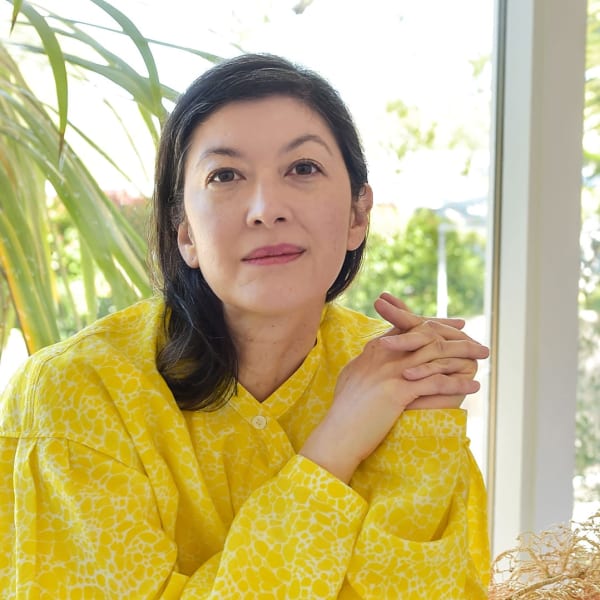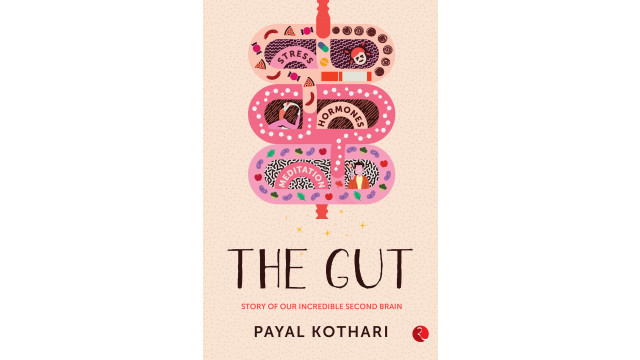Q&A with Nik Sharma

Nik Sharma is the writer, recipe developer, and photographer who founded the popular cooking blog A Brown Table — showcasing his vibrant recipes (along with lush images) influenced by his early life in India, his travels around the world, and his current home in California. After giving up a career in science (he studied molecular genetics) to focus on cooking, he wrote the cookbooks Season: Big Flavors, Beautiful Food and The Flavor Equation: The Science of Great Cooking Explained. He also writes columns for The Guardian, Serious Eats, and Food 52, exploring all facets of cooking with and experiencing flavor.
Maximizing flavor through technique is his guiding principle. Without using the word “healthy,” he taps into wellness by bringing ingredients to their fullest potential. Sharma is working on his next cookbook, a follow-up to The Flavor Equation. “It doesn’t have a title,” he said. “I’m more from a technical side, so it’s about the technicalities of cooking vegetables. It’s not a vegetarian book, but the focus is vegetables.”
RG: How do you connect the dots between flavor and what you consider a healthy dish?
Nik: My primary focus has been not to use the word “healthy” because I feel it’s such a weighted word and means so many different things to different people. In the West, we’re so focused on sugar and fat, and then you go to countries where there isn’t enough food available and sugar and fat are actually important to health, to provide energy. Morally and technically I avoid using the word whenever I write. I also try to avoid diets as much as I can.
The focus has always been, “What can I cook that’s flavorful and tasty keeping in mind what you could achieve with certain ingredients?” I’m not the type to say, “In order to taste a vegetable and enjoy it, I just need to use minimum salt and pepper.” No, I’m not like that. Or, “Oh, if it grew beautifully.” No, I feel like you have to flavor your food. If you know how to flavor meat, you should know how to flavor vegetables.
I think that vegetables are a much more complicated situation than meat. All meat usually behaves in a similar fashion. Vegetables are all so different because they come from so many plants. Knowing how to flavor each of these just makes it so much more complicated and challenging but fun at the same time. Trying to express a vegetable through bringing out the flavors and adding new flavors, for me, it’s about exploring the global palate. That’s my lens on eating in general. But also specifically with vegetables.
RG: So how might you season a favorite vegetable?
Nik: One of the things I really like exploring is deviating from the normal way people explore vegetables. With texture. That’s really important to me. I’ll give you something really simple.
Tomatoes. There’s this whole thing about tomatoes that they should be eaten in season, which is fine and all good, but there are ways to improve flavor if you get them out of season. Because even though we all say that, we all eat them out of season. Except in L.A. where everything grows year-round.
I concentrate their flavor by using techniques like dehydrating them down. And then in the oven or roasting them. That concentrates the flavor because a lot of the water evaporates. And then you’ve got a stronger taste. Of umami, the saltiness, the sweetness, the acidity of the tomato. It becomes much more pronounced.
And applying those techniques and taking that ingredient after it’s been treated in a certain way and using it in different ways. You could then take the tomatoes and make a better tomato vinaigrette for a salad. You could then take the tomatoes and serve them with grilled cheese or on a hot summer day a grilled tomato and mozzarella salad. I’m just throwing it out there. Make a condiment, maybe pickle them in olive oil and vinegar and then use that as a basis for a sandwich or wrap or something like that. I think there are ways to apply technique.
RG: Do you grow your own food?
Nik: I do try and grow my ingredients because it’s so rewarding. I know it sounds cliché to say it’s rewarding. But it’s fun because you can grow something and see it come from seed to the end. I really enjoy that. It requires a little bit, or actually, a lot of patience. I think most of gardening is keeping things safe from pets or the climate.
RG: What’s your favorite healthy snack?
Nik: Seaweed. I love seaweed, just dried seaweed sheets. They come in different flavors now. Salt and vinegar. Sesame oil. Olive oil. I really like those. I’ve been trying to do better and not eating that once a day because of the iodine. I’ve been trying to eat it once every other day. But I love that. Dried seaweed. I don’t even know what it’s called. Crisps. Or whatever they’re called. Just so good.
RG: Is cooking a form of meditation or mindfulness for you?
Nik: When I’m stressed out, I tend to cook. Because I know what the outcome will be. So knowing the outcome of something that I can predict kind of gives me calmness because I’m going through motions that are familiar and repeating them again and again. Chopping, stirring. You know if you add a certain amount of salt, you know how salty it will be. Or acid, and how sour it will be. Those are the things I can predict what the outcomes will be. So it makes me much more comfortable. I can flow without thinking of my regular problems in life. The process of cooking I do enjoy quite a bit. Washing dishes I do not.
RG: What’s your favorite season for cooking?
Nik: Summer. I would say summer. I feel you get all the veg I love — bell peppers, tomatoes, those come into full swing. Cucumbers are also great. And the flavors are just so strong. I love summer produce the most.
RG: What’s something you make a point of doing before gathering for a meal?
Nik: One of the things I really like to do is — because I don’t only cook Indian food or Indian-inspired food, my food is from pretty much a global palate — when I have friends and family over, I want to introduce them to something new.
Say, if I have a bunch of Indian people over like family and friends, or if I have people over who aren’t Indian and I’m using something that might be Indian, or Asian or African, I want to talk to them about the ingredient. I don’t want to give a lecture on it before a meal. That’s not my intent. I just want people to have a fun time but also want them to appreciate ingredients, where they come from. So for me it’s important to talk about, “Hey, this is a spice blend that comes from India or from Africa. It’s really great, you can use it in so many different ways." Or like African yams, I could use them as a substitute for potatoes.
Trying to convince people who are new to something also helps me at the end of the day because I’m using this opportunity to introduce them to something new. Hopefully they go out and ask grocery stores to carry those ingredients and they create a demand. So it not only makes it easier for me to find those ingredients when I want to cook them, it also gives people the opportunity to learn about other cultures and see we all use ingredients in similar ways, maybe the lens is slightly different.
RG: What’s an ingredient you think of as unique that you’d like to see more people using?
Nik: Nigella seeds. I don’t think people use nigella enough. They always confuse it with cumin and call it black cumin, and it’s definitely not. Or onion seed, and it’s definitely not. I think nigella is such a special spice to begin with. It’s so beautiful on bread or even just on grilled vegetables. If you’re roasting vegetables and you want to add a little crunch.
Say, for example, you’re breading a bell pepper, you can do your breadcrumbs and everything and that’s fine. What if you toss in a few teaspoons of nigella seeds? You’re building flavor on that crust. For me, nigella’s one of those spices that’s extremely underappreciated, and I don’t think you can easily find it in grocery stores. You have to find it at a specialty or spice store.
RG: What’s your guilty pleasure?
Nik: So I always lean toward rice for everything. Every time an editor would ask me, “Nik, what would you serve this with?” I always say, “Obviously rice, what a stupid question to ask.” I love crispy fried rice. One of my late aunts used to make this for me. She would take leftover rice, put soy sauce and everything, fry an egg, just like you make regular fried rice. But she would add ketchup. And it’s the ketchup that made it special. She always made that in Bombay for me. It's so not what a fried rice should be, but so delicious for me. And if no one’s at home, if my husband’s away, then that’s what I’ll make for myself. Just throw an egg in there, reach for some frozen peas, some chopped carrots and onions. I like to add a lot of scallions and chives on everything. I’m very big on that. So those go in there and that’s it.
RG: One food experience that you considered life-transforming?
Nik: Ok. I want to say just learning how to fry an egg. Because that’s what my parents taught me to do in order to be self-sufficient at home. Both my parents worked. The first thing taught me was to fry an egg. That was an important thing. Because it taught me a lot. To appreciate fire and be conscious of things, not to burn things. Which is a basic of cooking. For me, learning something so simple but learning how to appreciate how everything comes together and how an ingredient transforms.
Key Takeaways
- Cooking is a positive way to battle stress.
- Growing your own ingredients can be rewarding.
- Rice provides energy and essential carbs.





